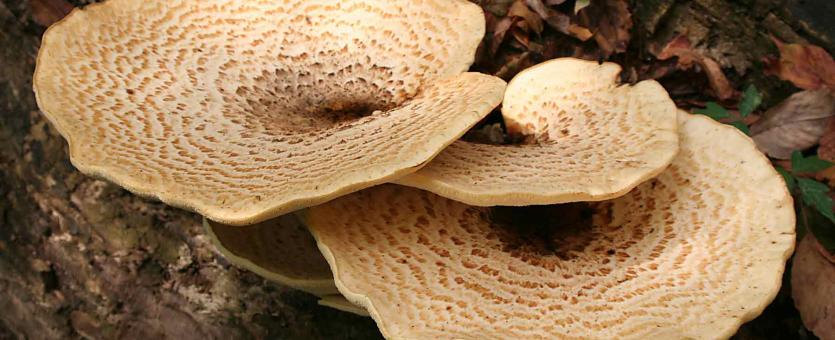
Large, fleshy, scaly, yellowish tan bracket fungus; large, yellowish white pores; short stalk; smells like watermelon rind. Grows singly or in layers, on living or dead deciduous wood. May–October. Cap circular to fan-shaped; yellowish tan; covered with dark, hairy scales. Pores large, angular; yellowish white. Stalk stublike; blackish at base; off-center, tough. Spore print white. Spores magnified are oblong, elliptical, smooth.
Lookalikes: Other polypores, none of which are known to be poisonous.
Cap width: 2½–12 inches; stalk length: ½–2 inches; stalk width: ½–1½ inches.

Statewide.
Habitat and Conservation
Grows singly or in layers, on living or dead deciduous wood. Can reappear for years in the same location, often fruiting more than once a year.
Status
Considered a good edible, especially when the mushroom is young. If you find the dryad’s saddle, you can cut off the tender edges, slice them into small pieces, and cook them in butter. Drain and pat dry, then make a sugar syrup and pour evenly over them and refrigerate. The result tastes like watermelon candy.
Life Cycle
This species lives as a network of cells (mycelium) within living trees as a parasite, and dead trees as a saprobe, that digests and decomposes the wood. When ready to reproduce, the mycelium develops the bracket that emerges from the log—this is the reproductive structure. In polypores, spores are produced in the pores beneath and are released to begin new mycelia elsewhere.
Human Connections
When you are eating a wild mushroom for the first time, even one that is considered a "choice edible," it is a good idea to sample only a small amount at first, since some people are simply allergic to certain chemicals in certain fungi. Make sure they are cooked, too.
Ecosystem Connections
This is one of the many fungus species that live on decaying wood. It and other such saprobic fungi play an incredibly important role in breaking down the tough materials wood is made of and returning those nutrients to the soil.
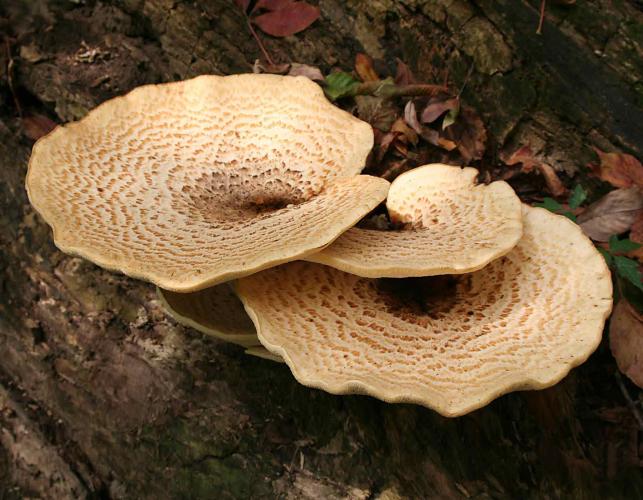
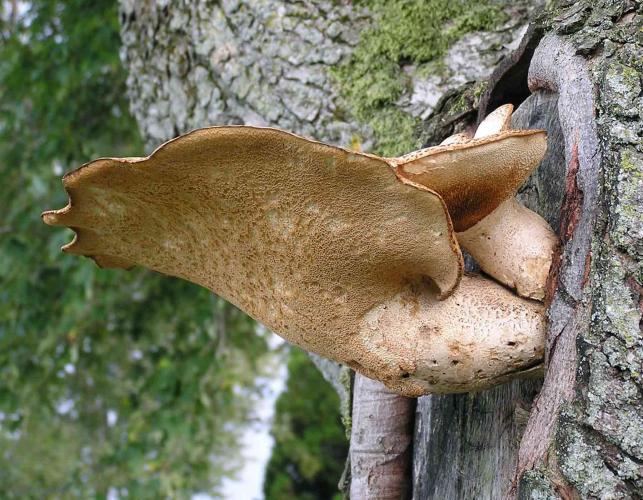
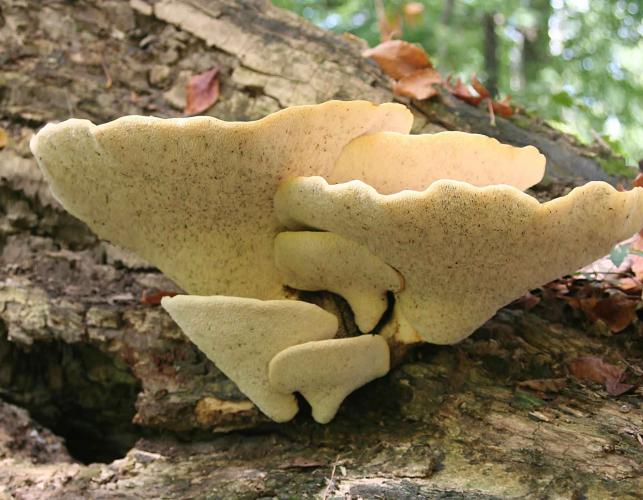


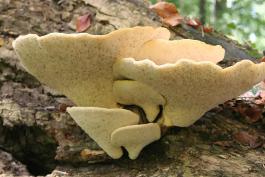
Mushrooms are a lot like plants, but they lack chlorophyll and have to take nutrients from other materials. Mushrooms are neither plants nor animals. They are in a different kingdom — the fungi. Fungi include the familiar mushroom-forming species, plus the yeasts, molds, smuts, and rusts.
Always be cautious when eating edible mushrooms. Be absolutely sure of the ID, and only eat a small amount the first time you try it to avoid a reaction..





















